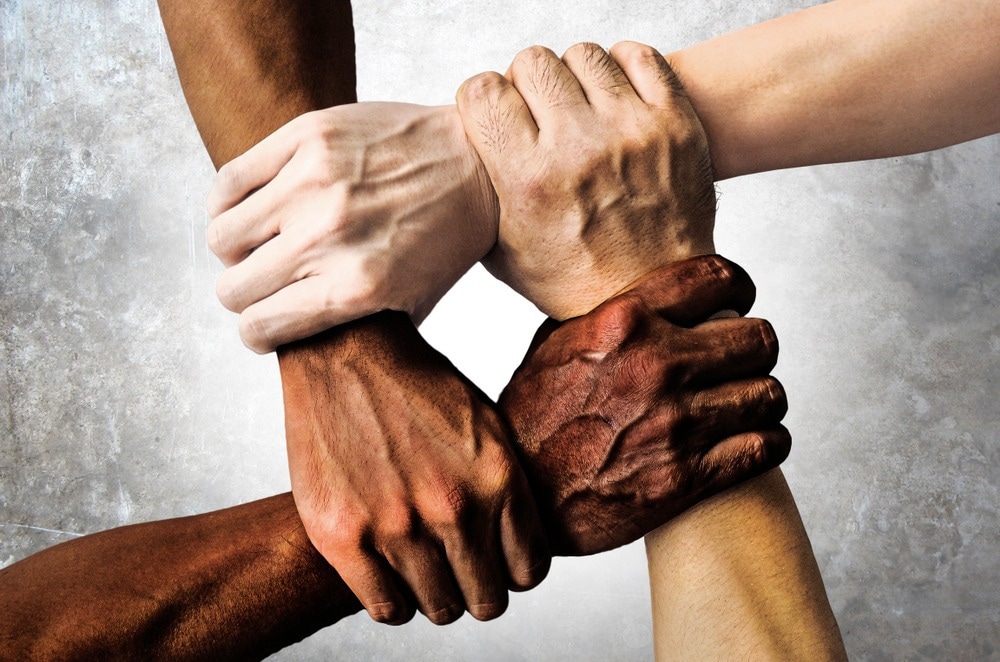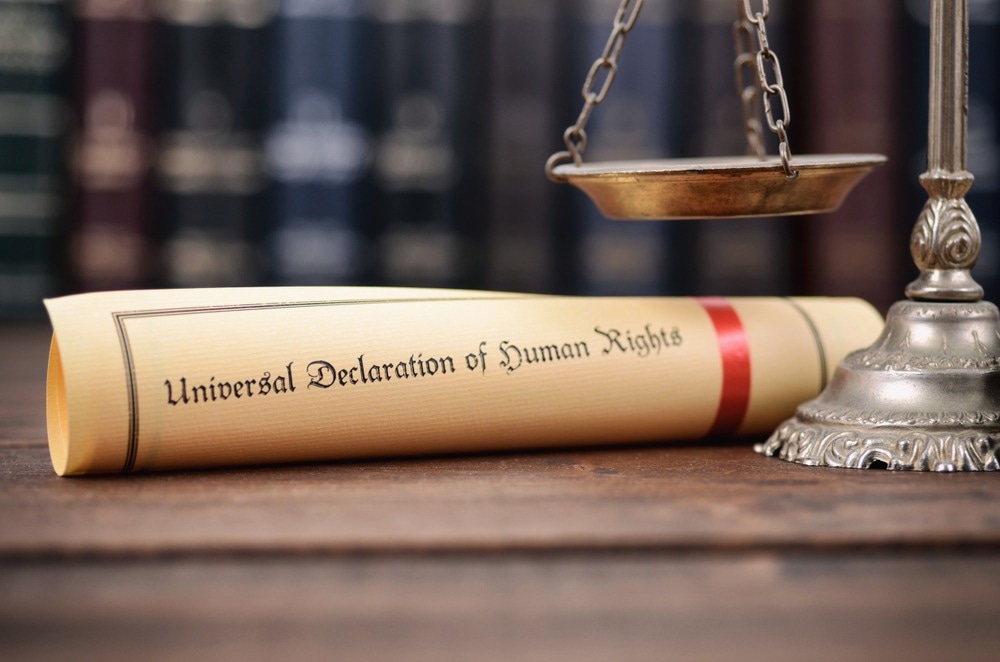What does the Universal Declaration of Human Rights state?
How did the Universal Declaration of Human Rights come about?
What controversies surround the Universal Declaration of Human Rights?
References
Further reading
The Universal Declaration of Human Rights (UDHR) is an internationally recognized document proclaimed by the United Nations General Assembly, the primary policymaking and representative branch of the United Nations, in 1948. The document was drafted by a committee chaired by Eleanor Roosevelt, at the time former first lady to USA President Franklin Roosevelt, in the wake of World War II, in Paris, France. Within the document, 30 articles concerned with the basic rights and fundamental freedoms of all humans are laid out, defining the universality of said rights as inherent, inalienable, and applicable to all, regardless of nationality or other factors.

Image Credit: TheVisualsYouNeed/Shutterstock.com
Though the UDHR is not necessarily a legally binding document, it has acted as the basis for numerous national and international laws and agreements, eventually leading to the passing of the International Bill of Human Rights in 1976, which does act as international law.
What does the Universal Declaration of Human Rights state?
The contents of the UDHR are set out in 30 articles, each of which sets forth specific rights and freedoms in particular situations. The opening articles set out the basic concepts of dignity, liberty, and equality and establish the rights of individuals, such as the right to life and prohibitions against slavery and torture. The document then sets out the fundamental legality of human rights and cites specific remedies for violation before describing the rights of individuals within the community, such as freedom of movement and residence and the right to property and nationality.
Universal Declaration of Human Rights
Articles 18 to 21 then lay out spiritual, public, and political freedoms that should be available to all humans, such as freedom of thought, expression, religion, and conscience, with particular relevancy to freedom of the press. Articles 22 to 27 then relate to an individual’s economic, social, and cultural rights, such as the right to an adequate standard of living and access to healthcare, with special mention made of pregnant women, young mothers, and children. The final three articles establish the means of exercising rights laid out in the document, exceptions, and the duties of individuals to society.
How did the Universal Declaration of Human Rights come about?
During World War II, the allies (the United Nations) defined “four freedoms” as part of their war goals, being freedom of speech, freedom of religion, freedom from fear, and freedom from want, i.e., a state should not censor, enforce religion upon, or terrorize its citizens, each of whom have a right to live an adequate life with food and shelter. Throughout the war, these sentiments were reinforced. Eventually, in 1945 the United Nations Charter was drafted, which acted as a treaty between signing nations to uphold the principles laid out within.
In the years immediately post-war, when the true scale of Nazi atrocities became apparent, calls for a more expansive human rights charter with thorough definitions were made. Effectively, the UDHR sets out definitions and specifies the rights of individuals to better define the United Nations Charter and provide a basis of enforceability.

Image Credit: corgarashu/Shutterstock.com
Between 1947 – 48 the UDHR underwent several drafting processes, initially based on a list of rights drawn up by John Peters Humphrey, a Canadian legal scholar recently appointed as the director of the division of human rights within the United Nations Secretariat. French judge and recipient of the Nobel peace prize René Cassin then developed the underlying structure of the document, influenced by the Code Napoleon, the French civil code that has been in effect since 1804.
The drafting committee made subsequent alterations at this point, which was chaired by Eleanor Roosevelt of the United States of America and representatives from several allied nations around the world, specifically the United Kingdom, the Republic of China, Lebanon, Australia, Chile, France, the Soviet Union, and Canada.
The third committee of the general assembly spent 81 meetings considering the declaration, within which 168 resolutions for amendments were made and passed. The document was translated into five official versions in various languages and finally adopted by the United Nations General Assembly in a unanimous vote, 48 to 0 (eight voters abstained).
What controversies surround the Universal Declaration of Human Rights?
Several controversies occurred between drafting states while developing the UDHR, one primary disagreement being regarding the enforcement and legality of such a document. In particular, British representatives were frustrated at the lack of legal obligation associated with the document and the status of merely being a moral guide.
Another point of contention was how the document should treat the origin of human rights, and whether they are granted naturally or by a being of higher power, and also whether the UDHR should deal at all with positive rather than negative rights. That is, whether human rights are concerned with the pursuit of happiness or merely the avoidance of violations of one's freedoms and rights.
References
Further Reading
Last Updated: Dec 12, 2022